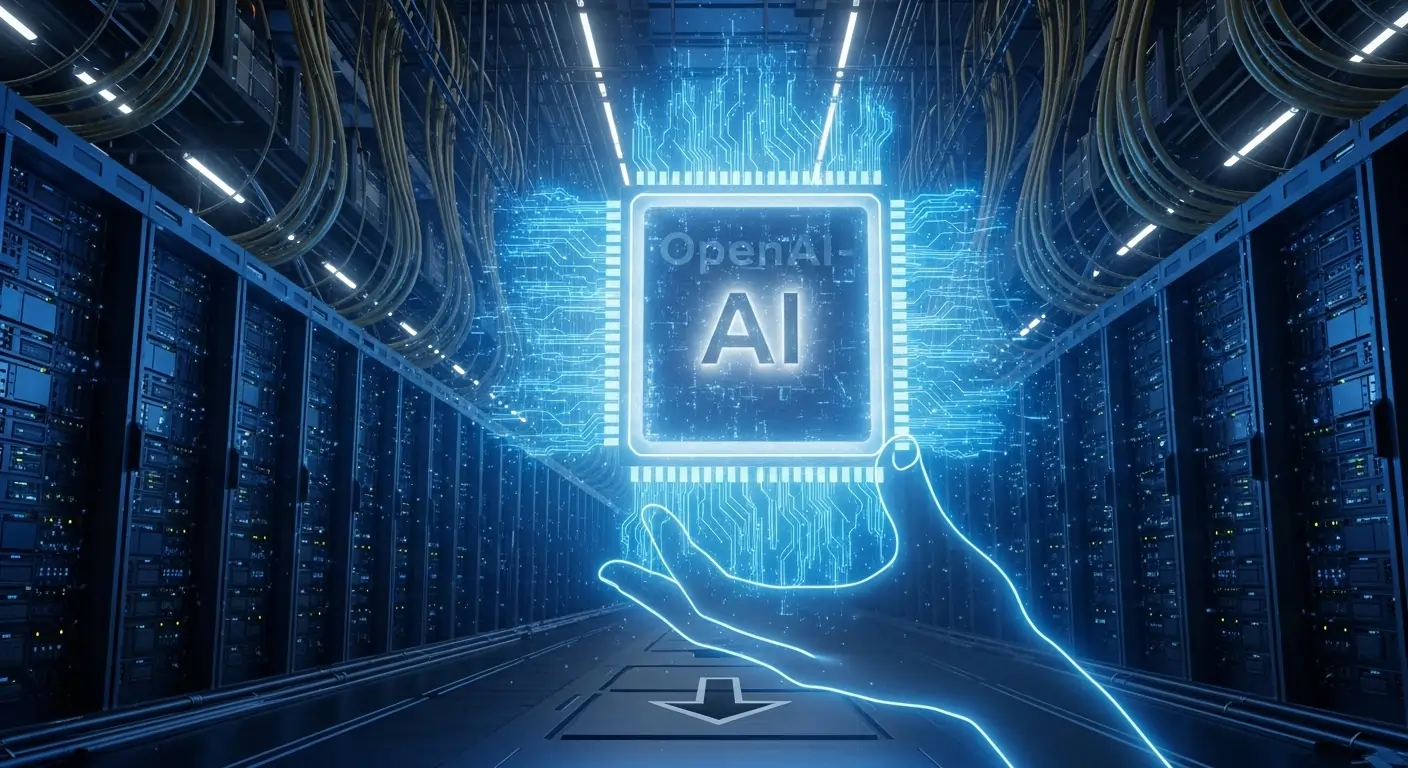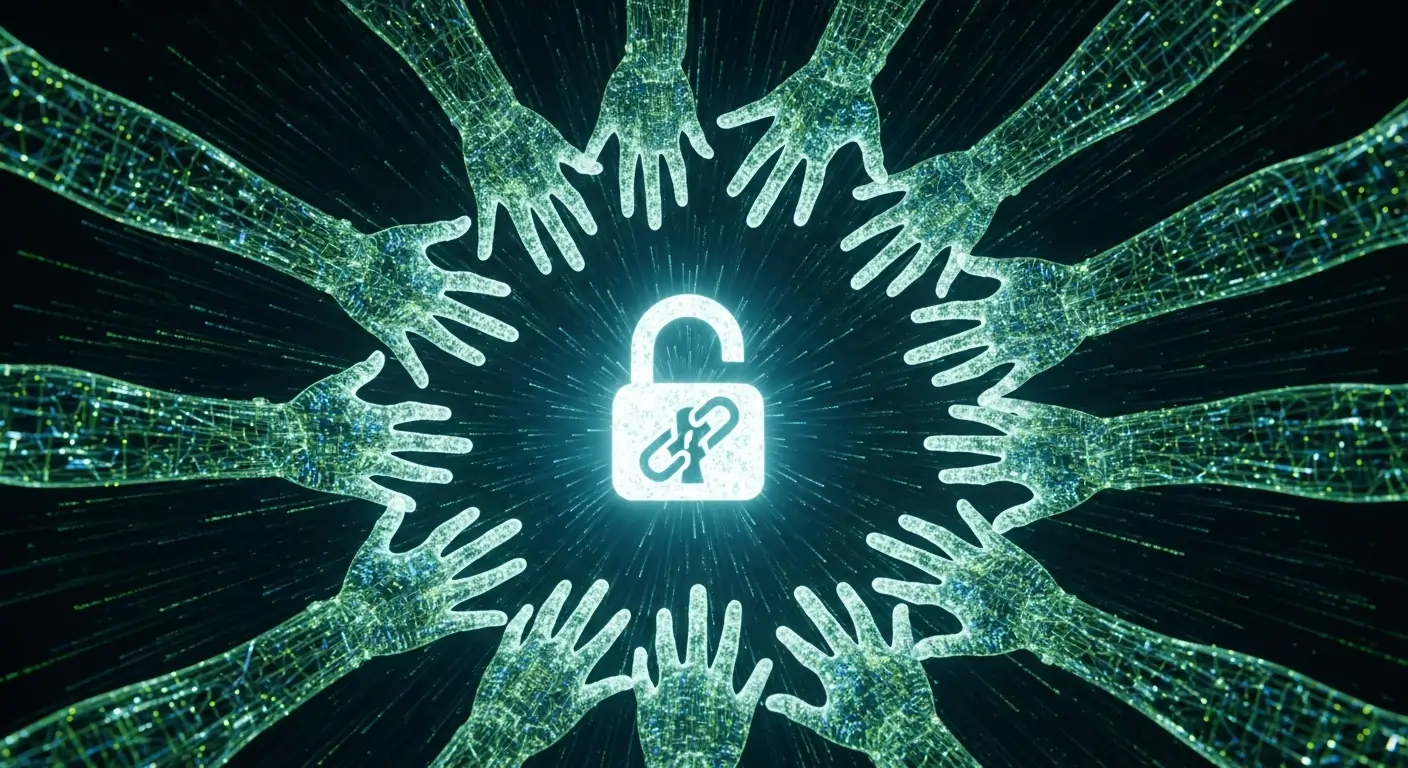The artificial intelligence landscape isn’t just evolving; it’s experiencing an earthquake.
While the world’s biggest tech companies pour billions into exclusive, closed systems, a far more powerful and relevant revolution is unfolding—one that hands the most advanced AI tools directly to you, without the hefty price tag.
If you blinked this October, you missed the biggest shift yet.
OpenAI, the name synonymous with ChatGPT, just inked a mind-boggling partnership with semiconductor giant Broadcom to deploy 10 gigawatts of custom AI power.
But here’s the headline they buried: this massive infrastructure build isn’t just about serving their paid customers; it’s a colossal gamble on making next-generation artificial intelligence accessible and affordable for everyone.
The scale of the switch is staggering.
The term ‘Open AI’—encompassing free platforms and community-driven, open-source models—is seeing an explosive 900% year-over-year growth.
People aren’t just passively watching; they are actively searching for alternatives to expensive, closed AI systems, with monthly search interest topping 5 million queries. The global switch has begun.
Table of Contents
The $100 Billion Foundation: Why OpenAI’s Hardware Deal Means Cheaper AI for You

On October 13, 2025, the AI industry watched as OpenAI and Broadcom announced one of the most ambitious infrastructure projects in history.
They are co-developing systems featuring Broadcom’s cutting-edge accelerators and Ethernet solutions designed for “massive scale-up and scale-out operations.”
OpenAI CEO Sam Altman frames it simply: “Partnering with Broadcom is a critical step in building the infrastructure needed to unlock AI’s potential and deliver real benefits for people and businesses.”
To put the scale into perspective: Ten gigawatts of computing power is enough electricity to run over 8 million U.S. homes, or five times the capacity of the Hoover Dam.
But why should this corporate hardware deal matter to a regular user? Because OpenAI is designing its own chips to “embed what it’s learned from developing frontier models and products directly into the hardware.”
- Translation: They are building custom, hyper-efficient machines. This means more powerful AI that runs at lower cost, which ultimately trickles down to more capable, faster, and possibly even freer tools for you.
The Tsunami of Adoption: ChatGPT’s Staggering 800 Million Weekly Users
The moment AI became mainstream is over—it’s now utterly foundational.
As of October 2025, ChatGPT boasts over 800 million weekly active users. That means nearly one in ten people on Earth are using this AI tool every seven days.
To appreciate the speed of this adoption:
- Facebook took eight years to reach 800 million users.
- Instagram needed six years.
- ChatGPT crushed those records in less than three years.
The growth trajectory is simply breathtaking. ChatGPT doubled its weekly user base—from 400 million in February 2025 to 800 million by October—in just seven months. Users are now sending 2.5 billion prompts daily.
Altman’s observation sums up the shift: “AI has gone from something people play with to something people build with every day.”
GPT-5: How Free AI Just Got a PhD (And Why It’s On Your Phone)

August 7, 2025, delivered another shockwave: OpenAI released GPT-5, their most advanced model ever, and made it available to all ChatGPT users, including those on the free plan.
This wasn’t just a slight upgrade; it’s a quantum leap in capability:
- PhD-Level Reasoning: GPT-5 can now solve problems with the expertise of a doctoral researcher across virtually any subject.
- Massive Context Window: The model can read and process up to 272,000 tokens—that’s the equivalent of having the AI read 500 pages of text in a single conversation.
- Significantly Reduced Hallucinations: The most frustrating flaw of earlier AI—confidently stating incorrect information—is dramatically minimized, making GPT-5 far more reliable.
The power is so great that Sam Altman himself recounted a moment when GPT-5 solved a problem he couldn’t crack: “I felt useless relative to the AI.”
Now, that same, world-class intelligence is available to you for free.
The True Revolution: Why Millions Are Switching to FREE, Open-Source AI

While the headlines belong to OpenAI, a parallel, grassroots revolution is putting unprecedented power into the hands of developers and everyday users: the open-source AI community.
The New Game-Changers
| Model Name | Key Feature & Impact | Why People Love It |
| OpenAI GPT-OSS | OpenAI’s first open-weight models (up to 120B parameters) released in August 2025. Carries a permissive Apache 2.0 license. | Commercial Freedom: Can be used and modified for business apps without royalty fees. |
| DeepSeek R1 | The Chinese model that became an overnight sensation in 2025. Competes with GPT-4, trained on a fraction of the budget. | Efficiency Champion: Briefly overtook ChatGPT as the most popular app in the Apple App Store in January 2025. |
| Meta Llama 4 | Released in April 2025, this newest generation features improved speed, better image comprehension, and is embedded across Facebook, Instagram, and WhatsApp. | Ubiquitous Access: Brings advanced AI to billions of users inside their favorite social platforms. |
Four Critical Reasons for the Open AI Shift
You might be asking, “If ChatGPT is so good and free, why look elsewhere?” The answer is all about control, cost, and privacy.
- Cost Predictability (Developer Nightmare): A free tier is great, but subscriptions and especially API costs for developers can skyrocket. Open-source models eliminate unpredictable API charges entirely. Once you set up the hardware, the AI is free to run indefinitely.
- Data Privacy & Control (The Trust Factor): When you use a closed, cloud-based AI, your data is processed on their servers. Open-source models can run entirely on your own laptop, server, or private cloud. Your sensitive information never leaves your control.
- Customization Freedom (The Developer’s Playground): Proprietary AI is a black box. Open-source models give you the full code. You can fine-tune them on your specific company data, optimize their behavior, and integrate them exactly how you need them.
- No Vendor Lock-In (Business Security): Relying on a single provider for critical functions is risky. With open-source models, you own your infrastructure and are not at the mercy of one company’s pricing or policy changes.
The Hardware Race Intensifies: A $100 Billion Validation
OpenAI’s infrastructure ambitions go beyond Broadcom.
Their historic partnership with AMD in October 2025 to build another 6-gigawatt AI infrastructure validates AMD as a major player and secures the computing power needed for the next generation of free AI tools.
This combined with the $100 billion Nvidia partnership (September 2025) and a massive rumored deal with Oracle means OpenAI is assembling an unprecedented, global-scale AI computing empire.
This investment—hundreds of billions of dollars—is the clearest signal that industry leaders believe the future of work and life will be built on AI.
Your Next Steps: Getting Started with Open AI
The barrier to accessing powerful, PhD-level AI has vanished. Whether you’re a student, a small business owner, or a professional, you can start using this technology today.
- Start with ChatGPT (Free Tier): Visit chat.openai.com and begin experimenting. Use it to draft emails, learn new concepts, or brainstorm creative ideas.
- Explore Meta AI (Llama 4): Try Meta’s Llama 4 directly inside Facebook, Instagram, or WhatsApp for instant, integrated AI assistance.
- For Developers/The Curious: Hugging Face is the best place to find and download hundreds of open-source models, including OpenAI’s GPT-OSS, to run on your own hardware.
The convergence of free, powerful tools and open-source alternatives ensures that the benefits of AI are no longer locked behind corporate paywalls.
The question is no longer if AI will impact your life—it already has. The real question is how you will engage with this immense, free power.